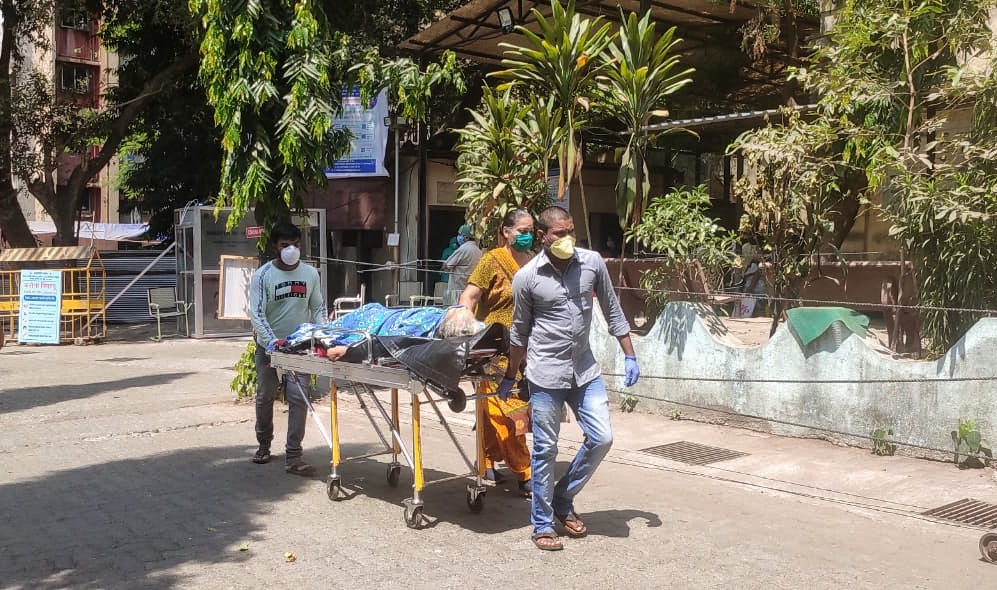Photos by Shraddha Kashid
The migrant workers staying in Dharavi are eager to head back to their rural villages, which is going to create a reverse rural-urban conflict in near future.
Dharavi, the intertwined mesh of narrow lanes and cluttered housing, located in the heart of Mumbai is facing one of the largest throes it has ever encountered.The Indian counterpart of the City of God has already reported 241 corona virus cases and 14 deaths in the last 24 days. The first Covid-19 positive case in Dharavi was reported on April 2. This largest slum on the globe is having an ultra-high population density, according to the data from the World Economic Forum, over 2,70,000 people are stacked per square kilometer. There is only one toilet per 1440 residents, according to the recent CFS study and 78% of community toilets in Mumbai’s slums lack even water supply, says 2019 Greater Mumbai Municipal Corporation survey.
Notably, after the outbreak of the virus, Maharashtra government implemented a stringent lock down and fettered all possible movements in the Mumbai city to arrest the contagion. The BMC (Brihanmumbai Municipal Corporation) meanwhile has come out with a ghastly mathematical projection that the city’s cases could soar to 70,000-odd in about a month from now. Shankar Yadav, a philanthropist resident in Dharavi, who provides more than 50 food parcels to the vagrants in the Dharavi lanes has bleak anticipation regarding the success of lock down here. “In a match-box sized room, where 8 to 10 people are crammed under a single roof, social distancing is merely a dream”. Shankar quipped. “These penurious people who share a single toilet are highly vulnerable because shared toilets are a hotbed for epidemics”. He added. Even while the Maharashtra government tries to put all the hands on the deck to control the virus are close but no cigar. Thousands of the people residing here live hand to mouth depending upon household works, daily wages, leather and textile factories, waste recycling industry, and sundry blue collar occupations. Now with an extended lockdown till May 3, their sustenance is totally dependent upon the food supplies from various NGOs and philanthropists like Shankar Yadav.

Nonetheless, in April, the International Labour Organization (ILO) warned that 400 million Indians working in the informal sector were at risk of falling into deeper poverty during the virus-led crisis. Along with this, the experts have claimed that, where private toilets are a deluxe, cash crunch hinders the food stocks raising, people in Dharavi will have to step out of their home more often and it brings the most populated area into a verge of explosion. Shankar who is working as a non teaching staff in SIES College says that “This is a time where people cannot only depend upon the government or politicians, but the humanity and society have to take the batten. People can do more in Dharavi, than the authorities”.

Since the job openings are dried up, the migrant workers staying in Dharavi are eager to head back to their rural villages, which is going to create a reverse rural-urban conflict in near future. Centre for Monitoring Indian Economy (CMIE) have stated that unemployment rate in rural India catapulted from 8.29 percent in March to 20.21 percent in the first week of April itself, which would generate ripples in all the corners of Indian economy and society.

Meanwhile, Mumbai created 983 containment zones to check the spread. More than half of these Containment zones are located in the shady slums which are heavily congested. Maharashtra government officials said with the number of cases in the city and neighboring areas increasing, parts of the state would continue to remain under lock down at least till June.According to the report of Economic Times, the government is planning to elevate the level of restrictions due to the alarming rise in the detected cases. More importantly, the monsoon is about to hit the shores of Mumbai within two months. The intensely populated city is highly prone to the deluge during the monsoon. In a quagmire of impossible social distancing, improper sanitation facilities and a devastating monsoon on the doorsteps, this god forbidden suburb is soon going to be in dire straits.
#Stay home
Excellent !!
100% True.
Till nw all ruling parties are giving false promises to get elected. But after winning the election no one cares. Political parties are also helpless because of congested area. At Dharavi there are many SSI. Due to this labour’s are coming frm out of Mumbai and staying here in bachelor room. Corona virus spreads fast due to congested area as thy can’t maintain safe distance.
I hv given only my suggestion.
Excellent article
Nicely quoted by author and whole heartedly I appreciate brother Shankar Yadav for taking good intiative. The respective authorities should look into this minute issues stated by the residents of Dharavi.
Excellent